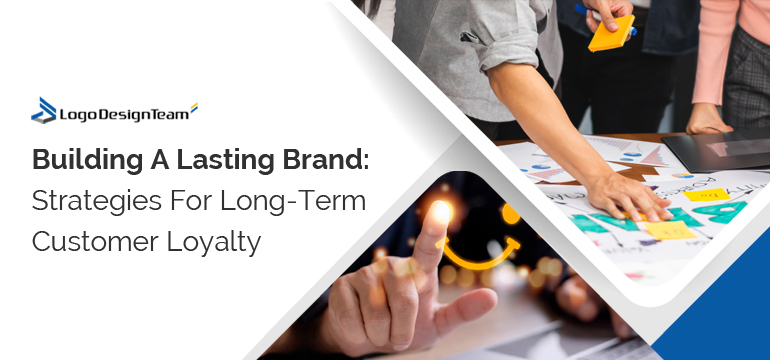Building a strong and lasting brand is crucial for organizational success. However, it’s not just about providing a good product or service but also fostering a client relationship that keeps them coming back.
That’s why brands must offer a unique experience to create long-term customer loyalty. Imagine a shop where staff greets customers by name, remembers their preferences, and goes above and beyond to satisfy them. This level of personalized service is what differentiates brands and fosters long-term loyalty.
As an entrepreneur or marketer, you may wonder how to build this business loyalty. Here are nineteen effective strategies to consider:

1. Compelling Brand Narrative
One of the critical drivers of customer loyalty is a compelling brand narrative. It sets you apart and leaves a lasting impression on customers.
To create an impactful brand narrative, try using the Story Brand Framework. This proven method helps you craft a powerful and engaging story. You can find more details on creating a brand narrative by following this link: https://connectivewebdesign.com/blog/storybrand-framework.
The narrative you create with this approach has a lasting impact on your audience. Say you own a fitness brand targeting busy professionals. In this case, you can share the story of a busy executive who prioritized their health and wellness with your brand’s support can be highly effective. This positions your brand as a trusted guide, empowering busy professionals to live healthier lives. By fostering this genuine connection, you inspire long-term loyalty.
2. Authenticity in Messaging
Authenticity is a powerful tool in building long-term customer loyalty. Brands that consistently stay true to their values have a unique appeal to customers.
By crafting authentic messaging, brands can strike a personal chord with their customers and foster trust. Imagine a clothing company that shares its product development process with its customers. They post about their product materials, like organic cotton and recycled polyester.
They also discuss production challenges like finding sustainable dyes or skilled embroidery artisans. Even occasional errors, like misprints on T-shirts, are discussed openly. This openness builds credibility and fosters customer investment in the brand’s growth.
3. Impressive Product Offers
Your products or services must impress and provide value to build lasting customer loyalty. Providing top-notch products that surpass customer expectations is vital.
Customers who feel satisfied with their purchase tend to return for more. Consider a brand that sells eco-friendly, sustainable products. They invest in R&D to make high-quality products without compromising their environmental commitment. This dedication builds customer loyalty through shared values.
4. Exceptional Customer Service
Outstanding customer service is an essential driver of long-term customer loyalty. Clients who feel valued are more likely to return and recommend your brand.
Brands that go above and beyond to exceed customer expectations are what set them apart. Picture this: A client reaches out to a brand’s customer service with a query or issue. Instead of a robotic response, they experience personalized attention and a prompt resolution. This exceptional customer service enhances their loyalty and overall brand experience.
5. Consistent Brand Identity
Consistency in brand identity is crucial for building long-term customer loyalty. Your brand identity comprises your logo, colors, typography, and visual and verbal communication style.
When branding is consistent across touchpoints, clients develop a sense of familiarity and trust. Consider a brand with bright red, electric blue, and sunflower yellow branding. They use these vibrant colors on their website, social media, packaging, and store. By doing so, this brand creates a strong sense of cohesiveness, making it easy for customers to recall their style instantly.
6. Personalized Marketing
In today’s crowded marketplace, generic and cookie-cutter marketing messages no longer suffice. Personalization is key to building lasting customer loyalty.
By tailoring your marketing to individual client preferences and behaviors, you show that you care about their needs. Imagine a client receiving a name-based email from your brand. It also recommends products based on their purchase history and offers exclusive discounts on desired items. This personalized marketing approach makes the customer feel seen and valued.
7. Emotional Connection
Developing an emotional connection with your customers is vital for creating long-term loyalty. Emotions influence purchase decisions, and brands that evoke emotions can build strong customer relationships.
Think about a brand that tells stories through marketing, emphasizing customer values and goals. By appealing to happiness, nostalgia, or belonging, they create an emotional connection beyond the product.
8. User-Generated Content
Leveraging user-generated content (UGC) is a fantastic way to foster customer loyalty. When customers see others enjoying your products or services, it builds trust and social proof.
To leverage UGC, follow these tips:
- Drive customer engagement by prompting them to share their experiences using a branded hashtag on social media. This allows you to collect and curate user-generated content easily.
- Feature UGC on your website, social media, or physical stores. Showcasing real customers using your products or sharing positive experiences builds authenticity.
- Engage with and reward customers who share UGC. Comment on their posts and show appreciation for their support. Doing so strengthens relationships with existing customers and encourages participation.
Implementing these strategies fosters a strong brand that cultivates customer loyalty. For instance, a beauty brand’s website can feature real customer experiences with their whitening products. This social proof establishes trust and reinforces customer loyalty.
9. Social Responsibility
Modern consumers desire more than just products – they actively seek to support brands that align with their values. Showing dedication to corporate social responsibility (CSR) initiatives that align with your target audience can foster long-term customer loyalty.
For instance, a brand that donates a section of its profits to environmental causes can attract like-minded customers. By transparently sharing their initiatives and impact, their clients feel a sense of partnership with a supportive brand.
10. Co-Creation
Involve customers in product development or decision-making to build brand loyalty. Including them in the conversation shows you appreciate their input.
Imagine a brand that regularly solicits customer feedback and improves products. This co-creation approach creates products that meet customer needs and builds customer loyalty.
11. Loyalty Programs
A well-designed loyalty program can build customer loyalty. Loyalty programs incentivize repeat customers for their continued support, making them feel valued.
Consider implementing a points-driven loyalty initiative as part of your brand’s approach. These points are redeemable through discounts, exclusive offers, or even free products. Such loyalty programs encourage customers to keep coming back and reinforce their loyalty.
12. Social Listening
Building customer loyalty requires listening to and using customer feedback. Social listening involves monitoring social media and reviewing sites to learn what customers think of your brand.
For instance, if you notice customers mentioning a specific issue consistently, you can address it proactively and make improvements. Doing so shows that you prioritize giving them the best experience.
13. Influencer Partnerships
Collaborating with influencers that align with your brand’s values can nurture long-term customer loyalty. When clients see their favorite influencers endorsing your brand, it helps create trust.
Imagine a beauty brand launching a limited-edition product with a famous influencer. The influencer’s followers, who trust their recommendations, tend to try the product themselves. This partnership can drive sales and build a loyal customer base among the influencer’s audience.
14. Thought Leadership and Customer Education
Establishing your brand as an industry thought leader creates audience trust and loyalty. By consistently providing valuable content, you position your brand as the go-to resource for your customers.
For example, a software company could create a blog sharing in-depth guides, tutorials, and industry insights. This content maximizes customer value, establishes brand expertise, and fosters loyalty.
15. Community Building
Creating a sense of community around your brand helps foster long-term customer loyalty. A platform for customer interaction with your brand fosters belonging and emotional connection.
Picture this: Clients can discuss fashion trends, share styling tips, and post photos of themselves wearing a clothing brand’s clothes in its Facebook group. This community-building initiative boosts customer engagement and creates a loyal, connected customer base.
16. Experiential Marketing
Offering memorable experiences to your customers is a powerful way to cultivate loyalty. Experiential marketing creates memorable, interactive experiences beyond traditional advertising.
Consider a food and beverage brand’s pop-up event, where customers can try new flavors and meet the founders. This experiential marketing strategy evokes positive emotions that connect customers to the brand.
17. Transparent Communication
Keeping your customers informed about updates or changes in your brand is crucial for building trust and loyalty. Transparency builds customer trust and respect, strengthening long-term relationships.
Imagine a brand that discloses pricing, product availability, and policy changes. They notify customers via multiple channels to inform them of updates and their rationale. This transparent communication fosters trust and loyalty among customers.
18. Retargeting
Retargeting is a strategy to reach potential customers who have shown interest in your brand but haven’t bought yet. Effective ads, emails, and social media campaigns can get them to return and buy.
For instance, clothing brands can reach customers who abandoned their carts. The brand encourages repeat purchases with limited-time discounts in retargeting ads or emails.
19. Continuous Innovation
Innovation plays a vital role in building lasting customer loyalty. By innovating and staying ahead, you show your commitment to providing cutting-edge offerings.
Imagine a technology brand that regularly releases updates and new product features. These updates improve customer experiences, enhance performance, and bring new functionalities. In turn, this brand maintains its customers’ loyalty and keeps them excited about what’s coming next.

The Path To Lasting Customer Loyalty
In conclusion, building a lasting brand requires a multifaceted approach. Executing these strategies with passion, authenticity, and a customer focus can build a supportive fan base.
Remember, building a lasting brand is a journey. Take a step-by-step approach and adapt these tactics to fit your unique brand and customer needs.




